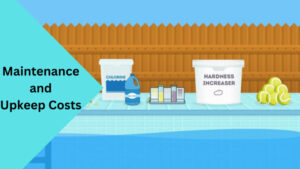Indoor pools have become a popular addition to homes and commercial spaces alike, offering year-round swimming opportunities and numerous benefits. If you’re considering installing an indoor pool, you may wonder: how much is an indoor pool? In this comprehensive guide, we’ll delve into the true cost of an indoor pool and break down the various factors that contribute to its overall expense. Whether you’re a homeowner or a business owner, this article will provide you with valuable insights to help you make an informed decision.
Factors Affecting the Cost of an Indoor Pool
Several factors influence the cost of building and maintaining an indoor pool. Understanding these factors will help you gain clarity about the financial commitment involved. Let’s explore each of these factors in detail. With pricing guide
-
Construction Expenses
To begin with, the cost of constructing an indoor pool includes various components, such as design and planning, materials and labor, and additional features and accessories.
Design and Planning Costs
Hiring a professional pool designer and architect is crucial to ensure a functional and aesthetically pleasing indoor pool. These experts will work closely with you to understand your vision and requirements. The design and planning phase typically includes the creation of detailed blueprints. The cost for these services can range from $2,000 to $10,000.
Materials and Labor Charges
The materials used in the construction of an indoor pool can significantly impact the cost. Factors such as the size of the pool, the materials chosen for the structure and interior finishes, and the complexity of the design will all affect the overall expense. On average, you can expect to spend between $50,000 and $100,000 on materials and labor for a standard indoor pool.
Additional Features and Accessories
The cost of an indoor pool can increase further if you opt for additional features and accessories such as waterfalls, slides, diving boards, hot tubs, or automatic pool covers. These enhancements provide additional enjoyment and convenience but come at an extra cost. The price for such features can range from a few thousand dollars to tens of thousands, depending on your preferences.
-
Maintenance and Upkeep Costs

Once your indoor pool is built, you’ll need to consider ongoing maintenance and upkeep expenses. These costs ensure that your pool remains clean, safe, and in optimum condition.
Regular maintenance tasks include cleaning, water testing, chemical balancing, and filter replacements. Engaging a professional pool maintenance service can cost you between $1,000 and $3,000 annually. Alternatively, you can choose to maintain the pool yourself, which may reduce the expenses but require additional effort and time on your part.To explore more details and considerations regarding Mantenance cost, our comprehensive guide on How Much Does Pool Maintenance Cost: A Comprehensive Guide has you covered.
-
Heating and Energy Costs
Heating an indoor pool can be a significant recurring expense. The cost depends on various factors, including the size of the pool, the desired water temperature, and the climate in your location. A common method for heating indoor pools is using a heat pump, which is energy-efficient and relatively cost-effective. On average, the annual heating cost for an indoor pool ranges from $1,000 to $3,000.
To reduce energy expenses, consider investing in pool covers to retain heat and minimize evaporation. Additionally, exploring solar heating options can help cut down long-term energy costs.
-
Insurance and Permits
It’s essential to account for insurance and necessary permits when budgeting for an indoor pool. Contact your homeowner’s insurance provider to explore coverage options for your pool. The cost may vary depending on factors such as the size, location, and specific features of your pool.
Additionally, you may need to obtain permits from local authorities before beginning construction. Permit costs can range from a few hundred to a few thousand dollars, depending on your region and the complexity of your project.
-
Return on Investment (ROI)
While the cost of an indoor pool may seem daunting, it’s important to consider the potential return on investment. Indoor pools can add significant value to a property, especially in regions with limited swimming seasons or high demand for recreational amenities. In some cases, the increased property value resulting from an indoor pool can offset a portion of the initial cost.
To determine the potential ROI, consult with real estate professionals or appraisers in your area who are knowledgeable about indoor pool valuations.
Conclusion
Investing in an indoor pool offers numerous benefits, but it’s crucial to weigh the costs involved before taking the plunge. The true cost of an indoor pool includes factors such as construction expenses, maintenance and upkeep costs, heating and energy expenses, insurance, permits, and potential return on investment. By carefully considering these factors and consulting experts, you can make an informed decision that aligns with your budget and long-term goals. So, whether you’re looking to create a private oasis within your home or provide an additional amenity to attract customers, understanding the true cost of an indoor pool is the first step toward turning your vision into reality.

Greetings, fellow pool enthusiasts! I’m Turner Davis, your dedicated guide to the world of pool care and maintenance. With over a decade of experience in the field, I’ve made it my mission to transform ordinary pools into extraordinary aquatic retreats.

